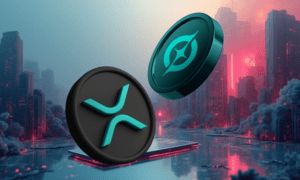The mobile technology landscape is in constant flux, characterized by ever-increasing complexity and soaring user expectations. Navigating this dynamic environment requires not only technical prowess but also astute leadership capable of steering development teams toward impactful solutions.
The ubiquity of mobile applications, commanding 88% of users’ mobile time, underscores their critical role in business and daily life. This dominance fuels a rapidly expanding market, with mobile app revenues projected to hit $613 billion by 2025. Amidst this demanding backdrop, figures like Naga Sai Charan Gubba are emerging, demonstrating the blend of technical depth and strategic vision necessary to thrive.
Gubba is a passionate software engineer and mobile technologist whose career trajectory exemplifies adaptability and a relentless drive for impact. Specializing in React Native, he has honed his expertise across diverse sectors including e-commerce, FinTech, Health, and EduTech, contributing to projects within both agile startups and Fortune 500 giants like Walmart-Sam’s Club and HP.
His journey has seen a deliberate evolution from focused coding to architecting high-level, scalable, and user-focused mobile applications. At twenty-seven, he has distinguished himself not just through technical skills but through a growing focus on addressing complex business requirements with strategic technical designs, integrating solutions, managing cross-functional teams, and mentoring peers.
This article delves into Gubba’s approach to software engineering leadership, exploring his strategies for fostering cross-functional collaboration and nurturing technical talent within his teams. It examines his experience navigating the challenges of React Native development in demanding enterprise environments and his forward-thinking methods for defining scalable architectures.
Furthermore, it highlights his focus on the critical integration of artificial intelligence into mobile technologies, a trend poised to reshape the industry. Through his experiences and insights, we gain a view into how balancing deep technical execution with overarching business strategy positions engineers like Gubba to lead impactful projects and potentially shape the future of mobile platforms.
The genesis of leadership: From code to strategic impact
The transition from individual contributor (IC) to a leadership role in software engineering is a common career progression, yet it represents a fundamental shift in responsibilities and required skills. It involves moving beyond the direct creation of code to guiding teams, developing talent, and aligning technical initiatives with broader company objectives.
For Gubba, this evolution was not merely a career step but a natural consequence of his core motivations. “My journey into leadership in software engineering was driven by my passion for solving complex technical challenges and my desire to make a broader impact beyond just writing code,” he explains. His initial focus on mastering React Native and mobile development across varied industries provided the essential technical grounding.
However, the experience revealed the limitations of purely technical contributions when tackling larger goals. “Over time, I realized that scaling mobile applications, integrating solutions, and architecting high-level systems required not just technical expertise but also the ability to align technology with business goals,” Gubba reflects.
This realization mirrors a critical demand placed on modern technical leaders: the need for strategic thinking and business acumen to complement technical depth. The shift involves expanding one’s perspective from the how of building software to the why and what, considering resource allocation, risk, and market needs.
This transition is notoriously challenging; many engineers struggle to relinquish the hands-on coding that previously defined their success, a phenomenon contributing to a high failure rate among new managers – one study suggests 60% fail within two years due to inadequate preparation. Successfully navigating this requires not just delegating tasks but fundamentally reframing one’s identity and value contribution from individual output to enabling and amplifying the team’s collective output.
Gubba’s journey illustrates this conscious pivot, embracing a role focused on driving innovation, fostering collaboration, and guiding teams through complex challenges – effectively becoming, as he puts it, a “solution enabler, bridging the gap between technology and business needs.”
Bridging perspectives: Fostering collaboration in cross-functional teams
In today’s software development landscape, assembling teams with diverse expertise – developers, designers, and product managers – is crucial for creating holistic and user-centric products. Such cross-functional collaboration breaks down traditional departmental silos, leading to significant, measurable improvements in efficiency and output.
Studies suggest that companies effectively leveraging this approach can see a 20-30% increase in development velocity and that well-coordinated collaborative teams can be 50% more efficient. Furthermore, these teams are often far more innovative, potentially being five times more likely to be high-performing in creativity. Gubba recognizes that unlocking this potential requires deliberate effort in managing these diverse perspectives.
His approach centers on establishing common ground and clear pathways for interaction. “Managing cross-functional teams is about creating a shared vision where developers, designers, and product managers align on both technical and business goals,” Gubba states.
This alignment is foundational; without a shared understanding, the very diversity that fuels innovation can instead lead to friction and inefficiency. “One of the key strategies I use is early alignment – bringing all stakeholders together at the start of a project to ensure that technical feasibility, design vision, and business priorities are well understood,” he elaborates.
This proactive step, combined with clear communication channels, shared objectives, regular check-ins, and collaborative brainstorming sessions, ensures that different functional experts can contribute effectively towards a unified goal. Gubba also emphasizes a “user-first mindset” as a guiding principle, ensuring that technical and design choices consistently serve the end-user experience and business impact.
By fostering an environment of mutual respect, transparency, and trust, he enables teams to work cohesively, transforming the potential of diverse expertise into tangible, impactful products. This structured approach to interaction is vital for channeling collaborative energy into innovation rather than letting it dissipate into confusion or conflict.
Nurturing talent: Mentorship for technical excellence and growth
Mentorship has emerged as a powerful catalyst within the software engineering field, proving instrumental in fostering technical excellence, driving innovation, and cultivating the next generation of talent. The impact is substantial, with studies indicating significant improvements in employee retention – ranging from 20% to over 50% higher rates for mentored employees – and dramatically increased promotion rates for both mentees (5 times more often) and mentors (6 times more likely).
Gubba actively employs mentorship strategies to build these advantages within his teams, focusing on three core pillars. Firstly, he emphasizes leading by example.
“I ensure that best coding practices, architectural decisions, and scalable solutions are not just enforced but also demonstrated in my work,” Gubba explains. This active participation in code reviews and advocacy for clean, maintainable code establishes credibility and provides a clear benchmark for quality.
Secondly, he cultivates a supportive environment conducive to learning. “Fostering a Growth Mindset – I cultivate an environment where engineers feel empowered to experiment, fail fast, and learn,” he notes.
This involves encouraging peer programming, open discussions about technical trade-offs, and embracing new technologies, which helps the team remain adaptable in the rapidly evolving tech landscape. Such an environment aligns with the concept of psychological safety, which research suggests is vital for creativity and innovation.
Thirdly, Gubba focuses on structured learning. “Creating Structured Learning Opportunities – I organize knowledge-sharing sessions, tech talks, and internal workshops, ensuring that learning is a continuous process”.
This blend of demonstrating standards, fostering a safe learning culture, and providing formal learning avenues reflects a comprehensive approach. It combines the benefits of structured programs known to improve competencies with the advantages of informal peer support that boosts creativity, ultimately driving long-term success for both the engineers and the organization.
This strategic view of mentorship recognizes its power to influence not just individual skills but the team’s overall culture, retention, and innovative capacity.
Mastering React Native in the enterprise arena
React Native has become a dominant force in mobile development, favored by a significant percentage of developers (around 35-42% according to various surveys) for its ability to build applications for both iOS and Android from a single codebase, offering potential cost savings of 30-40% or more. The widespread adoption of React Native within the developer community, including those at companies like Walmart-Sam’s Club and HP (Gubba’s former employers), attests to its viability in enterprise settings.
However, deploying React Native effectively at this scale presents unique hurdles. Gubba’s experience leading teams at these large corporations provides valuable insights into overcoming these specific enterprise challenges.
A primary concern is performance and scalability. “As apps grew in user base and complexity, ensuring smooth performance across both iOS and Android became a challenge,” Gubba recalls.
He tackled this through meticulous performance optimization techniques, such as implementing efficient state management patterns, optimizing component re-renders, and strategically leveraging native modules for performance-critical operations. This aligns with known React Native challenges, where complex animations or large datasets can strain performance due to the inherent nature of cross-platform development.
Another significant challenge lies in integrating React Native with existing native codebases, a common scenario in large enterprises. “Large enterprises often have existing native codebases, requiring seamless integration with React Native,” Gubba states.
“I worked closely with native teams, defined clear APIs, and used bridges and TurboModules to enable smooth interoperability.” This highlights the necessity of bridging the native-JavaScript divide, a task often requiring deep technical expertise and careful API design, and an area where React Native’s New Architecture, including TurboModules, aims to provide improvements.
Furthermore, the fast-paced nature of retail and enterprise environments demands rapid feature development without compromising application quality. Gubba championed robust CI/CD pipelines, automated testing strategies, and modular architecture to accelerate releases while maintaining stability, addressing concerns about long-term maintenance often associated with cross-platform frameworks.
Successfully navigating these complexities underscores that while React Native offers efficiency, its effective use in demanding enterprise contexts heavily relies on the team’s expertise and strategic application of best practices.
Engineering for endurance: Crafting scalable mobile architectures
For any mobile application intended for long-term success and growth, particularly within an enterprise setting, the underlying technical architecture is paramount. Defining an architecture that is scalable – capable of handling increasing user loads, feature complexity, and future technological shifts – is not merely a technical exercise but a strategic imperative.
Gubba approaches this critical task with a focus on modularity, performance, and adaptability. Central to his strategy is a commitment to modular design.
“I ensure that our React Native codebase is structured using a feature-based architecture, where components, state management, and business logic are decoupled,” Gubba explains. This principle of breaking the application into smaller, independent, and reusable units aligns with established patterns like Atomic Design or feature-based structures.
Such modularity simplifies development, enhances testability, and makes the system significantly easier to maintain and scale over time. Efficient state management is another cornerstone, selecting appropriate libraries like Redux, Recoil, or React Query based on the application’s complexity to ensure performance scales effectively with data and interactions.
Beyond the front end, Gubba emphasizes well-structured backend APIs (RESTful or GraphQL) and leverages tools like monorepos (Nx, Turborepo) for code sharing in large-scale projects. Crucially, his architectural vision extends beyond immediate needs.
“I stay proactive about upcoming changes in React Native, dependency updates, and platform shifts (e.g., Fabric Renderer, TurboModules), ensuring that our tech stack remains adaptable to industry advancements,” he states. This forward-looking perspective, combined with robust CI/CD pipelines, ensures the architecture can evolve gracefully, incorporating new requirements and technologies without necessitating disruptive rewrites.
This proactive, multi-layered approach treats architecture not just as a blueprint for today, but as a strategic foundation for sustained growth and future innovation.
The nexus of technology and business: Strategic decision-making in action
True engineering leadership extends beyond technical implementation; it demands strategic thinking and the ability to make difficult decisions that align technology with overarching business objectives. Gubba encountered such a scenario during a critical project involving the migration of a large-scale e-commerce React Native application.
The existing app was plagued by an outdated framework version, legacy dependencies, performance bottlenecks, and cross-platform inconsistencies, hindering the business’s need for rapid feature development. The core conflict presented a classic technical debt dilemma.
“The dilemma was this – continue patching issues in the existing codebase, which would be faster in the short term but create long-term maintenance challenges, or invest time in a full-scale refactor, which meant delaying new feature rollouts but ensuring long-term scalability and performance,” Gubba recounts.
Opting for either extreme carried significant risk – patching would perpetuate instability, while a full refactor would halt business momentum. After carefully evaluating the engineering impact, business priorities, and the cost of accumulating further technical debt, Gubba led the team toward a balanced, incremental approach.
They introduced a modular architecture, migrating features piece by piece while keeping the core app functional. This strategy involved leveraging a monorepo for better code reuse, implementing targeted performance optimizations, and utilizing a phased rollout to minimize user disruption.
This methodical, risk-managed approach allowed the business to continue delivering value while systematically modernizing the codebase. The results validated the strategy: “This decision resulted in a 40% improvement in performance, reduced crash rates, and accelerated future feature development by 30%”.
This experience powerfully illustrates that effective technical leadership requires not just identifying the best technical path, but choosing the optimal strategic path that considers business constraints and ensures long-term sustainability.
Navigating the mobile evolution: Balancing innovation with stability
The mobile technology ecosystem is characterized by relentless change, with trends like advanced AI integration, augmented reality, and the rollout of 5G networks constantly reshaping possibilities. For engineering leaders, this presents a significant challenge: how to embrace innovation and keep teams at the forefront of technology without sacrificing the stability and efficiency crucial for reliable product delivery.
Gubba addresses this tension with a structured, three-part strategy. First, he fosters a robust continuous learning culture.
This involves encouraging developers to actively engage with the tech community through conferences and online resources, holding internal knowledge-sharing sessions, and promoting hands-on exploration of new tools via proofs-of-concept before production adoption. This proactive learning environment ensures the team stays informed and skilled.
Second, Gubba emphasizes the strategic adoption of new technologies. Rather than chasing fleeting trends, his approach involves careful evaluation based on tangible business impact, technological maturity, and long-term support.
“Instead of jumping on every new trend, I evaluate technologies based on business impact, stability, and long-term support,” he explains. He favors incremental adoption, citing the phased migration to React Native’s new architecture (Fabric and TurboModules) as an example, and maintains a tech radar to track innovations methodically.
Third, stability is maintained by optimizing development workflow. “We implement CI/CD pipelines, automated testing, and monitoring tools to ensure that new changes don’t introduce regressions,” Gubba notes.
Techniques like feature flags and phased rollouts allow for controlled testing of new implementations before full deployment, while a modular architecture minimizes the risk of system-wide disruption. This disciplined process—combining continuous learning with rigorous evaluation and stable workflows—allows Gubba’s teams to innovate responsibly, adopting valuable new technologies without compromising the quality and reliability of their applications.
Charting the course: Leadership aspirations in mobile’s future
Looking ahead, Gubba’s ambitions in engineering leadership are firmly rooted in driving the next wave of mobile innovation, focusing on scalability, efficiency, and the seamless integration of emerging technologies, particularly artificial intelligence – a field expected to power over 75% of smartphone interactions by 2025. His vision extends beyond technical execution to encompass team building, mentorship, and strategically connecting mobile capabilities with core business growth.
He aims to play a key role in shaping the future of mobile development. “I aim to architect and scale mobile platforms that seamlessly integrate with evolving technologies like AI-driven personalization, edge computing, and Web3,” Gubba states.
This involves not only building these platforms but also influencing industry best practices around performance optimization, native interoperability, and cross-platform efficiency, potentially through open-source contributions. His focus on AI-driven personalization aligns directly with major industry trends emphasizing tailored user experiences to boost engagement and retention.
Simultaneously, he plans on expanding his leadership influence by scaling high-performing engineering teams that excel technically while remaining tightly aligned with product impact and business goals. “By mentoring engineers and future leaders, I hope to cultivate a culture of continuous learning and innovation,” he adds, reinforcing his commitment to talent development as a core leadership function.
Recognizing the rapid pace of change, Gubba intends to remain adaptive, exploring advancements like low-code/no-code integrations and enhanced developer tooling – areas where AI is also transforming the development process itself. Ultimately, his goal is to operate at a strategic level, guiding mobile technology architecture and execution to serve as a fundamental driver of business innovation and growth, leveraging the immense potential of mobile platforms in the global economy.
This holistic vision, blending technical foresight, people leadership, and business strategy, encapsulates the multifaceted demands of modern engineering leadership.
Gubba represents a new generation of engineering leaders adeptly navigating the complexities of modern mobile development. His journey highlights a deliberate transition from deep technical expertise in React Native to a broader strategic role, emphasizing scalable architecture, robust performance, and effective cross-functional collaboration.
His commitment to mentorship fosters talent and innovation within his teams, while his proactive approach to integrating cutting-edge technologies like AI demonstrates a clear vision for the future. By successfully balancing technical rigor with strategic business alignment and people leadership, Gubba exemplifies the holistic capabilities required to lead teams in building the next generation of impactful, user-centric mobile applications that drive significant business value in an increasingly competitive digital world.



































